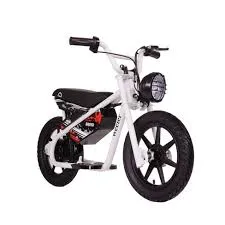
- Afrikaans
- Albanian
- Amharic
- Arabic
- Armenian
- Azerbaijani
- Basque
- Belarusian
- Bengali
- Bosnian
- Bulgarian
- Catalan
- Cebuano
- Corsican
- Croatian
- Czech
- Danish
- Dutch
- English
- Esperanto
- Estonian
- Finnish
- French
- Frisian
- Galician
- Georgian
- German
- Greek
- Gujarati
- Haitian Creole
- hausa
- hawaiian
- Hebrew
- Hindi
- Miao
- Hungarian
- Icelandic
- igbo
- Indonesian
- irish
- Italian
- Japanese
- Javanese
- Kannada
- kazakh
- Khmer
- Rwandese
- Korean
- Kurdish
- Kyrgyz
- Lao
- Latin
- Latvian
- Lithuanian
- Luxembourgish
- Macedonian
- Malgashi
- Malay
- Malayalam
- Maltese
- Maori
- Marathi
- Mongolian
- Myanmar
- Nepali
- Norwegian
- Norwegian
- Occitan
- Pashto
- Persian
- Polish
- Portuguese
- Punjabi
- Romanian
- Russian
- Samoan
- Scottish Gaelic
- Serbian
- Sesotho
- Shona
- Sindhi
- Sinhala
- Slovak
- Slovenian
- Somali
- Spanish
- Sundanese
- Swahili
- Swedish
- Tagalog
- Tajik
- Tamil
- Tatar
- Telugu
- Thai
- Turkish
- Turkmen
- Ukrainian
- Urdu
- Uighur
- Uzbek
- Vietnamese
- Welsh
- Bantu
- Yiddish
- Yoruba
- Zulu
Nov . 09, 2024 19:47 Back to list
How to Properly Adjust Your Mountain Bike Derailleur for Optimal Performance
Understanding Derailleur Adjustment for Mountain Bikes
Mountain biking is an exhilarating sport that combines adventure, endurance, and a touch of mechanical skill. One crucial aspect of maintaining your mountain bike is ensuring that the derailleur – the device responsible for shifting gears – is properly adjusted. A well-tuned derailleur enhances your bike's performance, offering smoother shifts and improving your overall riding experience. This article will walk you through the basics of derailleur adjustment tailored for mountain bikes.
What is a Derailleur?
A derailleur is a mechanism that moves the chain from one gear to another on a multi-gear bike. It consists of a series of components the derailleur body, jockey wheels, and a spring mechanism. The derailleur works alongside the shifters located on the handlebars. When you shift gears, the shifter sends a signal to the derailleur to move the chain to the desired gear.
Why is Adjustment Necessary?
Over time, your derailleur can become misaligned due to wear and tear, crashes, or simply the passage of time. A poorly adjusted derailleur can lead to several problems
1. Inefficient Shifting You might experience sluggish or missed shifts. 2. Chain Skipping The chain may not fully engage with the gear, leading to loss of power and control. 3. Chain Damage A misaligned derailleur can cause the chain to rub against the derailleur body or other components, leading to premature wear. 4. Potential for Breakage Continued use of a poorly adjusted derailleur could ultimately result in a catastrophic failure.
Basic Tools Required
To adjust your derailleur, you'll need a few tools
derailleur adjustment mountain bike

- A Phillips screwdriver - An Allen wrench set - A chain tool (if necessary) - A bike stand (optional but helpful)
Steps for Adjusting Your Derailleur
1. Inspect the Derailleur and Cables Before making any adjustments, examine the derailleur for any visible damage. Also, check the shift cables for fraying or rust. Replace any damaged parts before proceeding.
2. Set the Limits The derailleur has two limit screws, usually marked with H (high) and L (low). The high limit screw controls the maximum position for the smallest cog, while the low limit screw controls the largest cog. With the bike in the lowest gear (largest cog), adjust the low limit screw until the derailleur is perfectly aligned with the cog without rubbing.
3. Adjust Cable Tension Shift to the smallest chainring and largest cog. If the chain does not shift smoothly, you may need to adjust the cable tension. You can do this by turning the barrel adjuster on the derailleur or shifter. Increasing tension will help the derailleur move towards the larger cogs, while decreasing it will assist in shifting to the smaller ones.
4. Fine-tune the Indexing Shift through all the gears and observe the performance. If you notice ghost shifting (where the gears shift without input from you), further adjustments to the cable tension may be necessary. Repeat this process until each gear shift is smooth and precise.
5. Test Ride Once you've made your adjustments, take your bike for a test ride. Shift through the gears under load, as this mimics real-world conditions. Listen for any unusual sounds and ensure the shifts feel crisp.
Conclusion
Regular maintenance, including derailleur adjustment, is vital for keeping your mountain bike in top shape. By understanding how to adjust your derailleur properly, you can ensure a smoother and more enjoyable riding experience. Remember, if you're ever in doubt, consult your local bike shop for professional help. Happy riding!
-
The Ultimate Kids' Four-Wheeler Experience
NewsJul.09,2025
-
The Ultimate Guide to Mountain Bikes: Gear Up for Your Ride
NewsJul.09,2025
-
The New Age of Cycling: Electric Bikes for Every Rider
NewsJul.09,2025
-
The Best Kids Bicycles: Ride in Style and Safety
NewsJul.09,2025
-
The Best 3-Wheel Scooters for Kids: Fun, Safety, and Adventure
NewsJul.09,2025
-
Revolutionize Your Ride: Affordable Electric Bikes
NewsJul.09,2025
-
Finding the Perfect Mountain Bike for Every Rider
NewsJul.09,2025



